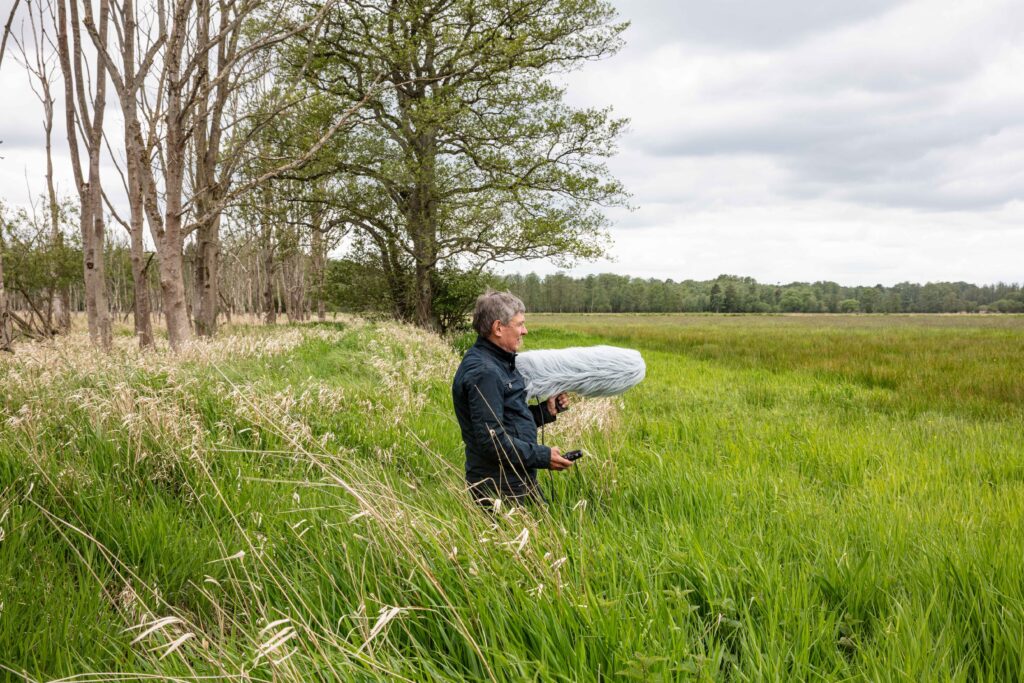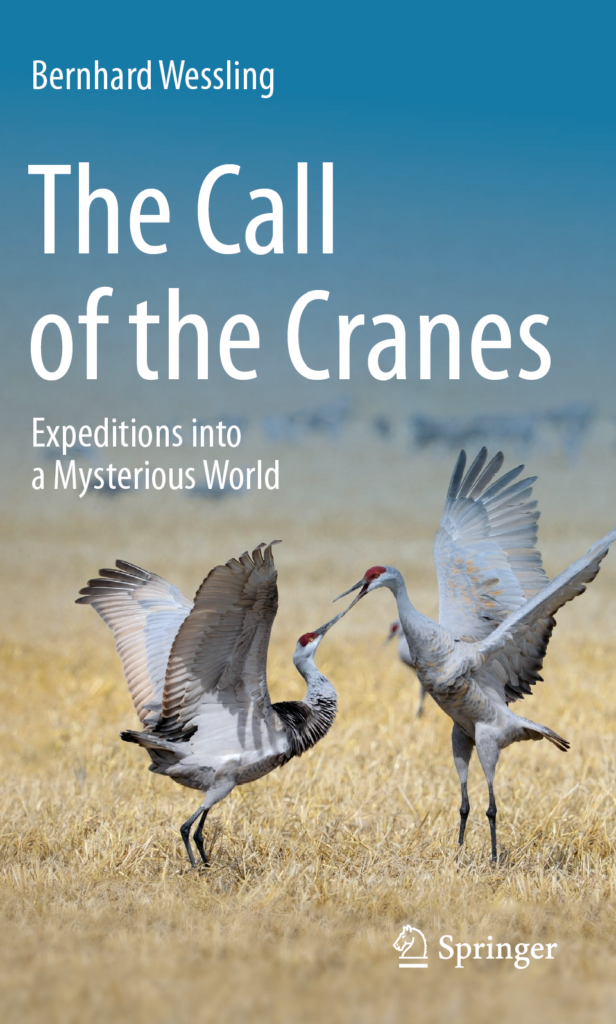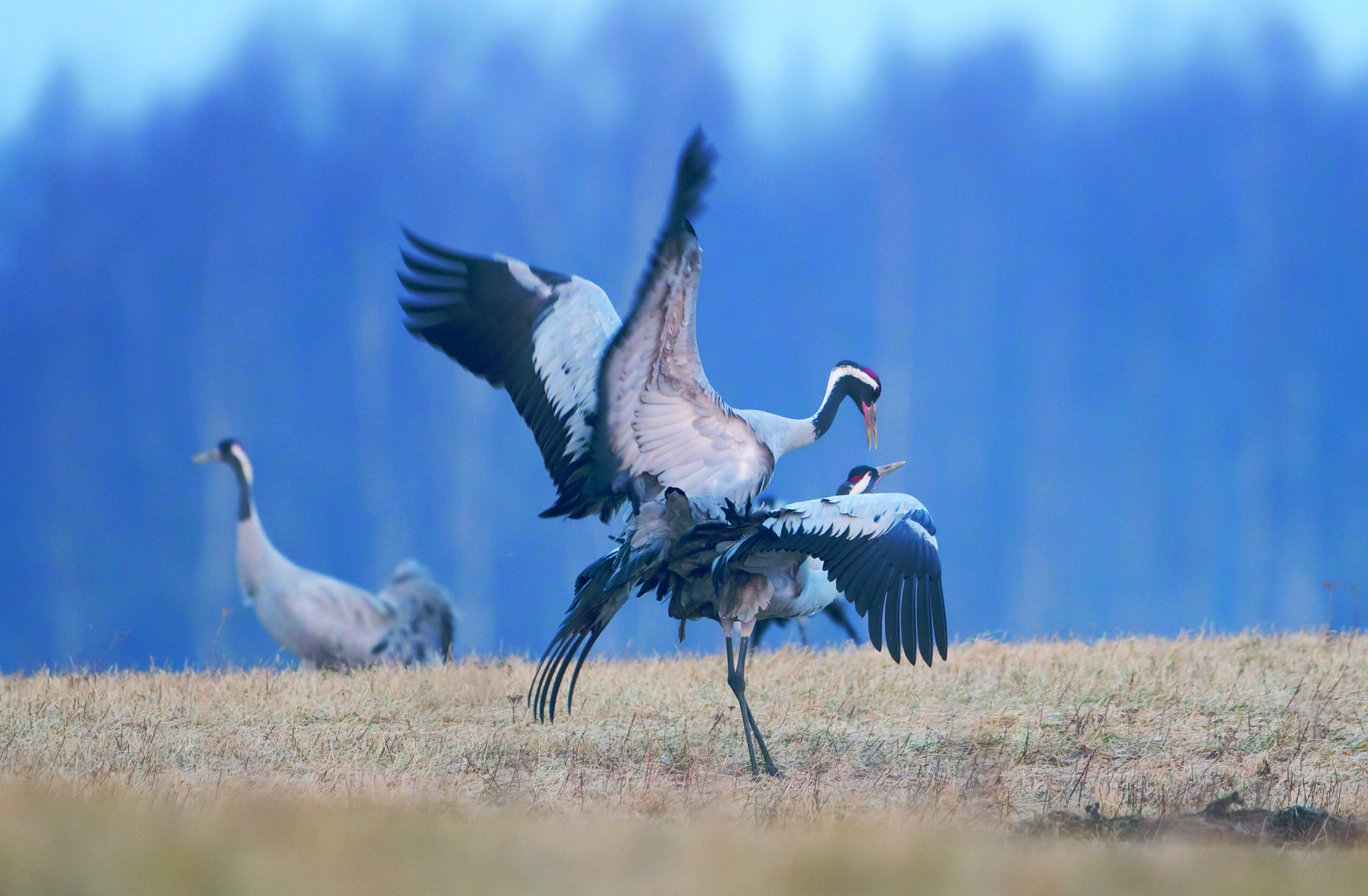Bernhard Wessling
The Call of the Cranes – Expeditions into a Mysterious World
It is possible to observe 4 crane species in India. Sure, above all, you have the Sarus
Crane. Then, three migratory crane species are wintering in India, the Demoiselle Crane,
the Black-necked Crane, and the Common Crane. The latter one motivated me first
together with other volunteers, to start a crane protection program in a nature preserve in
the North of Hamburg (Germany), when suddenly a first pair tried to establish a territory
and began breeding, centuries after the last cranes may have lived in this former moor and
wetland area. While I was responsible for this program, I spent a lot of time (besides my
job) in this about 10 km² small area. I observed over the years, with slowly increasing
number of cranes, a lot of behaviour which made me doubt about what I had read in books
and articles about cranes:
- Are these birds really basically dumb and are living only controlled by their genes, by
their innate behavioural patterns? - Is it this innate behaviour which results in a life-long partnership between male and
female crane, and a life-long return from wintering always to the same territory? - So cranes are basically inflexible? But why did I get the impression by carefully observing
them, that these and other statements may not be valid?
Therefore, being a nature scientist by education and in my main profession, I decided to
find out „who is who“. But how to do it without catching and banding them which itself has
a lot of limitations? (Besides others, we would never been able to get all of the cranes here
in the area, especially as the partners from former local young cranes would be from
elsewhere, and it is extremely complicate, risky and only rarely possible to catch and band
adult cranes.)
I came to the idea to record the crane calls – how lucky I was to have realized by just
hearing with my ears that the crane pars’ unison calls sound different from pair to pair! And
how lucky that this bird species has the custom that both sexes are calling, and this
together in unison! But I needed a software for analyzing my recordings – how to find this?
As nothing was available, I finally succeeded to develop it myself, with the help of an IT
expert, running on a software system which I was using in my job as well at that time,
„mathematica“. (Later, I prepared a different approach which is available for everybody and
free of charge.)
Year after year, the results became more interesting, and ever more surprising. In total, I
made a systematic monitoring of this area close to Hamburg over 10 years, in addition I
monitored 3 other crane breeding areas in Germany, but less thoroughly. Practically
nothing what I believed before about cranes could be confirmed, in contrast: These birds
are flexible, intelligent, observing, concluding, planning, they have an interesting
relationship life, some for life with the same partner, many with at least another one, a few
with many different partners, and a lot of unique relationship stories have been observed –
just by listening to the cranes, I happened to uncover a few mysteries which the cranes
have hidden from humans since thousands of years!
George Archibald, the founder of the „International Crane Foundation“ in Baraboo, WI
(USA) pushed me to go abroad with my new technique and study other crane species as
well. So I did,
- in Japan (Hokkaido) and in the Demilitarized Zone between North and South Korea with
the Red-Crowned Crane, - and in North America with the Sandhill and especially very intensively with the Whooping
Crane.

The Whooping Crane is, among the 15 cranes species we have on earth, the worldwide
most endangered crane species. It was the goal of a huge project to establish a second
wild population in Wisconsin, and to teach the just fledging young cranes to follow ultralight
airplanes from Wisconsin to Florida – but without getting imprinted on humans! This was,
no question, by far the most complicate and most exciting project about which I tell in my
book: how to record all kinds of, and also very soft, vocalisations which I needed to get
from wild Whooping Cranes? And many more questions which became clear to me only
when I was in the middle of the wild, huge area where the wild cranes were living. And
then, how to provide an artificial communication technique between the caretakers, pilots
and the cranes? It finally worked out.
Also the recording expeditions to Hokkaido (Japan) and into the Demilitarized Zone
directly at the border to North Korea have been thrilling. While the most touching
experiences and events happened in my „home“ nature preserve in the North of Hamburg.
Moreover, in the final chapters, I go far beyond my direct encounters with cranes, and I am
evaluating lots of data and other peoples’ observations which in total lead me to conclude:
Cranes are much more flexible and intelligent than we previously were willing to give them
credit for. Migration might not be primarily controlled by innate programs, but seems to me
being the result of cultural development, an extremely flexible culture! I have collected
several more evidence for the cranes’ intelligence and culture development capabilities,
including new research results about the migration behaviour of Demoiselle Cranes via
India.
I have written the book hoping that it might help people to look at cranes, and birds in
general, in a different way: with more respect and humility. I hope to motivate more people
to become active in nature protection – and perhaps a few enthusiasts who want to start
their own bioacoustic monitoring program, if not on cranes, then on another bird species?
A short tutorial how to do this is part of the book.

Bernhard Wessling
The Call of the Cranes – Expeditions into a Mysterious World
Softcover book, ISBN: 978-3-030-98282-9
276 pages, 48 photos, maps and graphs, 45 of which in colour
Links to the book:
- on the publisher’s web site: https://link.springer.com/book/10.1007/978-3-030-98283-6
- on the author’s web site: www.bernhard-wessling.com/the-call-of-the-cranes-short-intro
- some more detailed look into the book: www.bernhard-wessling.com/look-inside-crane-
calls
Dr. Bernhard Wessling, email [email protected]
Born in 1951, educated as a chemist, and professionally active in chemical research and
as entrepreneur with a focus on a very special new material for sustainable economy. As a
volunteer, he is involved in nature conservation with a strong devotion to crane protection.
